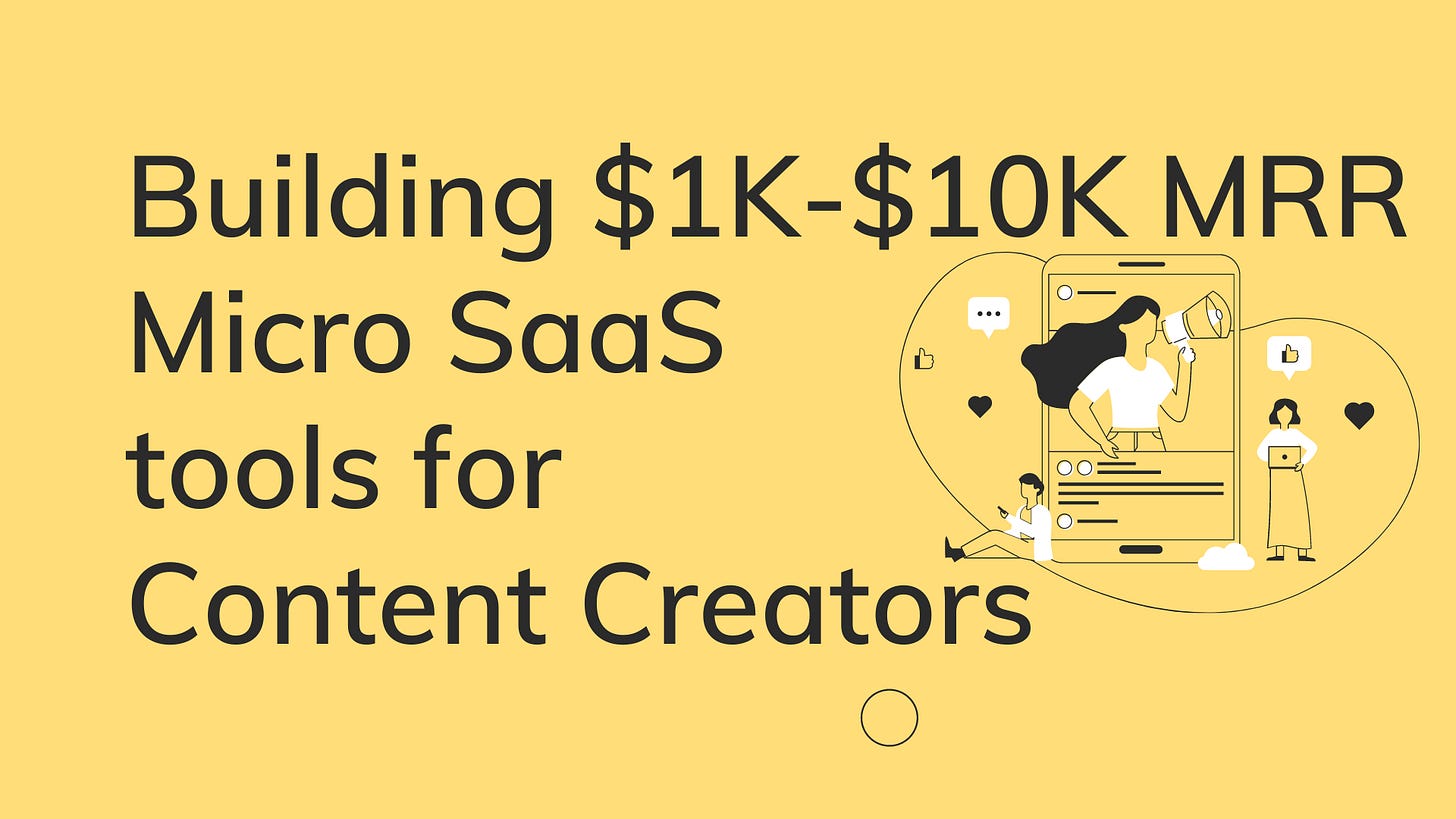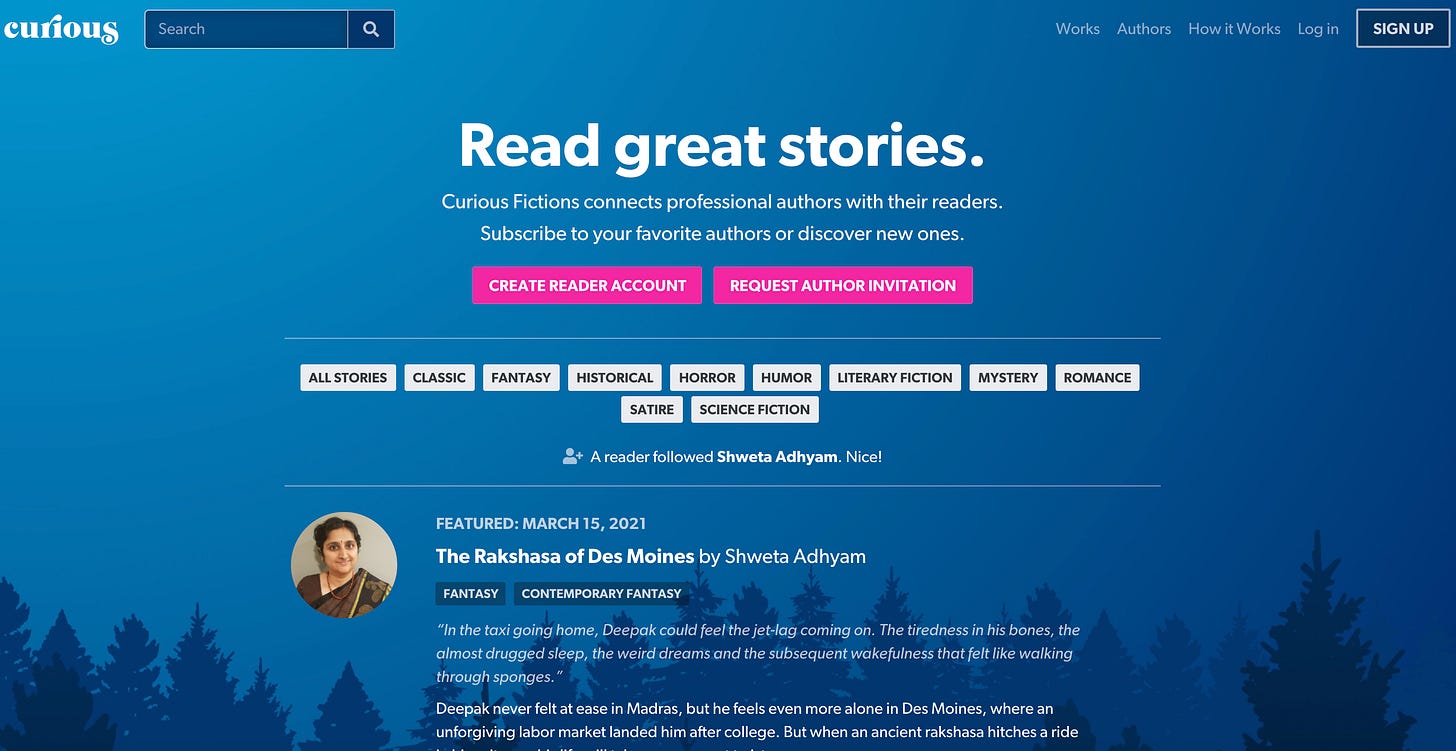Issue#19: Building $1K-$10K MRR Micro SaaS tools for Content Creators
We are excited to share the latest Micro SaaS news and Micro SaaS Ideas to help you on your journey as a SaaS founder. Let's explore what's new this week!
👉 Get your Pro subscription today - Get access to hundreds of Micro SaaS Ideas, updates on Micro SaaS trends, and access to a closed community of founders, builders and makers.
Unlock the Pro version
Get the full version of this newsletter and all previous letters by subscribing to Pro version.
No fluffy content. If your goal is to build a $100m ARR business, this is not the right post. Here I am are NOT going to talk about building the next Facebook or Twitter. If your goal is to make a $1K to $10K MRR, continue reading.This post will cover one SAAS area and talk about multiple niches in this space. This post also explains more on how to do tech implementation, do market analysis, how the current players are doing, and also ends with a cost analysis to understand the overall cost for 100 users.
Creator Economy is on the rise. More and more creators are creating quality content. People are happier to pay for quality content.
LiveKlass: A platform for world's leading creators and educators. Take live classes, build your own brand and grow your community.
CrossPost: Share your Content in one click. Helps bloggers and Solopreneurs to share their content to social platforms from one place.
Glow: Grow membership revenue with podcasts. Glow makes it easy to monetize directly from your biggest fans with exclusive podcasts.
CuriousFictions: Curious Fictions connects professional authors with their readers. Readers can subscribe to favorite authors or discover new ones.
Flattr: Support creators with one easy subscription or with one-time contributions
Supercast: The membership platform that listeners love. You can create your membership and get paid by your fans, every month
Publishizer: Crowdfunding literary agency that enable great ideas.
Flurly: The easiest way to sell digital products online. List your products in under a minute and keep 99% of what you make after payment processing fees. No monthly fees either.
Gumroad: Creators deserve to get paid for their work. Gumroad makes it easy.
Buy Me Coffee: Buy Me a Coffee is a simple, meaningful way to fund your creative work. Without stitching together a bunch of apps like Patreon, Mailchimp, and a donate button — you can accept support, memberships, and build a direct relationship with your fans
Patreon: Let your most passionate fans support your creative work via monthly membership
Podia: Turn your passion into income. Everything you need to sell online courses, webinars, downloads, and memberships without worrying about the tech.
Spayee: Create and sell online courses. Teach online with most secured platform for teachers, trainers and institutes
Kajabi: Build, market and sell your online course, membership site or coaching program with no coding, no hiring, no learning curve, no plugins and no broken integrations.
Ghost: Turn your audience into a business
Fangage: Own, engage & monetize your fans. Host exclusive content & fan experiences. Sell paid content & subscriptions
Thinkific: Create and sell online courses and membership sites under your own brand, and see first-hand the impact teaching online with Thinkific will have on your business.
Negative Nancy says - There is a lot of free content available. Why would someone pay for content?
Me: There are free newspapers and paid newspapers for decades. When something is free you are the product. People like to pay to provide quality content and privacy. Nesslabs makes more than $2K MRR with content and community.
Negative Nancy says - Content creating takes time.
Me: Certainly. But content can be repurposed from one form to another and helps to build an audience faster.
Negative Nancy says - Writing code is easier than creating content.
Me: It certainly is if you know how to code. But not everyone is proficient at code. Some developers accumulate years of knowledge that can be best articulated with written content or a Youtube video.
Negative Nancy says - Code can be automated. A newsletter cannot be automated.
Me: Right. Agreed. But you don’t need to automate. You can scale by outsourcing any help required for your newsletter.
Deep-dive
Gumroad, a product that helps people sell content online raised $5M funding in 24 hours.
Content creators are on the rise. The only way to stay in the trend is either “create content” or “create tools for content creators”.
Twitter acquired Revue - A newsletter SaaS
Clubhouse - Audio/voice platform still in beta but valued at millions
Facebook reportedly building newsletter tools for writers and journalists
Twitter working on Spaces for live audio conversations on Twitter
‘Creating content’ is often perceived as writing an ebook or writing a blog post. But that is not the case always. Note that I am not talking about “content writers”, I am talking about ‘content creators’. Creating content could be of various forms - creating courses, creating curated lists, creating a list of tools, creating a series of Tweets, creating a podcast, creating a Youtube video, creating an audiobook - are all considered as content creation.
So, why do content creators need tools? Content creators need tools for below three reasons.
Tools that help make more sales (either direct sales or via building an audience or selling affiliate products - all these falls into this category)
Tools that help save time in creating content
Any tool that you build for content creators should fall into one of the above two buckets.
Some niches
Tools to create Programming courses: Create a Micro-SaaS product that helps programmers create programming courses. See slip.so for inspiration. The tool should provide a platform where ‘programming course’ creators can add text in a rich-text editor and also show editable code blocks with examples. Make sure that you support editable code blocks so that the course takers should be able to edit with the code and play around right inside your course. To achieve this part where you provide an editable code block that can take the code, execute and give the output - you should integrate this with online compilers. For example, if the content is created for Python learning course, your code block should run this on an online compiler engine that can take this code, execute it on Python and send back the result to display on the webpage. To achieve this kind of functionality you should be using tools like JDoodle or Sphere-Engine. Tools like this support 20+ programming languages so your users can create courses for 20+ programming languages by using these tools.
Ads for Podcasters: Create a Micro-SaaS platform that auto embeds ads inside Podcast. This is similar to Youtube ads but just this one would be for Podcasts. There can be multiple add-ons for something like this. You can work with advertisers and get the ads automatically added to the podcast either manually or dynamically. Or you can let the Podcast creators embed ads. If you want to provide an option to podcasters to embed ads, provide options where podcast creators can create ad slots and entire ad start time and the audio bite or text for the ad. If they provide text, you should be able to auto-convert the text into an audio bite and insert it into the podcast at the mentioned time.
Content repurposing tools: Undoubtedly it takes a lot of time and effort to create content - be it newsletter or podcast or Youtube video. Make a Micro-SaaS product that helps users repurpose their content from one format to another. This will help content creators save time and also helps them to reach a wider audience from various platforms and thus results in more subscribers and sales.
…. get another 10+ additional niches from Pro version.



















